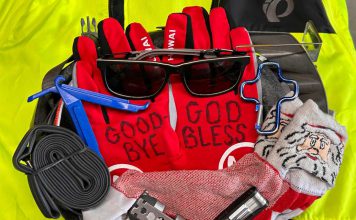Monday night is garbage night. The kids and I sort the bedroom
and living room waste cans into garbage, paper, and recyclables, as
appropriate. I burn anything an ID thief might find
interesting.
Monday night is garbage night. The kids and I sort the bedroom and living room waste cans into garbage, paper, and recyclables, as appropriate. I burn anything an ID thief might find interesting.
Then, at nightfall, Anne takes the blue bin, always full of paper, and the green tote, usually full of yard waste, out to the curb. I take the grey tote, usually half full of garbage, and the yellow bin, usually three-quarters full of recyclables, out to the curb.
By dawn, after a night full of mysterious clinks and curbside rustles, the yellow bin is well-nigh empty, save for some number 7 plastic and a few tin cans. The scavengers have been by.
I don’t mind scavengers. Yes, I know, it is against the law to take things out of recycle bins. The disposal company makes money from recycling, and so our garbage cost will be higher – assuming they actually pass the savings on to the consumers.
But I always assume that the people who take things out of recycle bins really need the money: homeless people, perhaps, or just poor people. So I ignore the mysterious clinks and the rattle of grocery cart wheels.
I only mind when they litter, or put my cans and bottles into my blue bin with my paper, or when I find aluminum cans and bottles in my shrubbery or gutter. Then I wonder irascibly why the scavengers cannot pick up litter, instead of waiting for me to collect it for them.
But I spent last weekend with three teenagers. The conversation turned to part time jobs. Megan works at Longs Drugs. Anne works at a stable. Clyde – not his real name, and he does not live in Gilroy – told us that he gets up at four in the morning, two days a week, to rifle through his neighborhood garbage and recycle bins. I was entranced.
I told Clyde that scavenging out of recycle bins had been a hot topic on the Red Phone at The Dispatch, and that I wanted to interview him, to find out why scavengers scavenged, and what they did with the proceeds.
Clyde obligingly spilled his guts.
Clyde is 17, a high school senior. He began scavenging when he was 6 years old, with his little red wagon. He used to scavenge at 6am, but some homeowners greeted him with shotguns, so he shifted to an earlier, more discreet hour.
Nowadays Clyde rides a bicycle, pulling a cart of his own design and manufacture. The cart is equipped with a special sorting device, also of Clyde’s own design and manufacture. One of his current projects is a motorized three-wheeler, which he intends to use instead of the bicycle.
Clyde thinks of his scavenging as his job, a job that gets him out of bed before dawn two days a week: one day for his immediate neighborhood, and another for the next district over.
Clyde investigates garbage as well as recyclables. He finds great treasures. Usually the best items are perched on top of the garbage cans, as though the former owner hopes that they will be picked up by an interested party. Most recently, he found a 17-inch flat screen monitor, a little muddy, and with a burnt out capacitor, which he promptly replaced.
Clyde is disdainful of aluminum and glass. Mostly, he takes number 1 plastic out of bins. He melts it down, slices it into appropriate thicknesses, and uses it for projects.
Clyde’s projects are varied. He rebuilds computers. He builds bicycles and motorized vehicles and skateboards and remote controlled vehicles. He has been known to rewire a powered wheelchair to answer to his remote commands. The wheelchair’s owner made him remove the controller.
I asked Clyde how he justifies stealing things out of recycle bins. He responded that the company charges the consumer to collect the items, then makes more money from selling the recyclables, which practice he views as unfair. His parents and grandfather know about his “part-time job” and approve. His father and grandfather share his talent for design and have taught him how to weld, machine, diagnose, and repair.
At least one scavenger is not the stereotypical homeless person I had envisioned.










